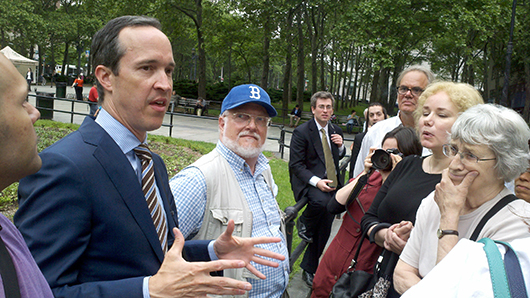Brooklyn judge puts off LICH decision; focus on community needs assessment

Jim Walden talks LICH at Brooklyn court. Photo by Mary Frost
State Supreme Court Justice Johnny Lee Baynes on Tuesday reserved his decision on the fate of Long Island College Hospital (LICH) after hearing final arguments from community groups that some of the rankings of the proposals should be tossed for not following the rules of the state’s RFP.
SUNY and the state Department of Health argued that the rankings should stand and the process of selling LICH should continue.
Eliminating the questioned rankings would move Prime Healthcare Foundation, the non-profit arm of a nationwide chain which proposes to operate LICH as a full-service hospital, into contention.
